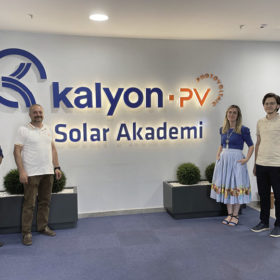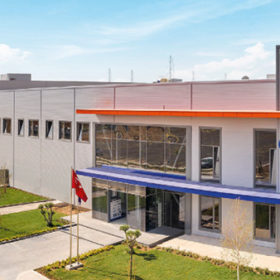Strong prospects to ‘Make in India’
India’s renewable energy sector, having so far focused almost solely on adding more generation capacity with ever lower tariffs, is undergoing a drastic change, as policy pivots toward domestic manufacturing. Vinay Rustagi, managing director of Bridge to India, looks at how the border conflict with China and endless supply side disruptions in the wake of Covid-19 have together strengthened the Indian government’s resolve to support the establishment of a more localized supply chain.
Teamwork makes the green work
In May 2018, India’s Ministry of New and Renewable Energy adopted the National Wind-Solar Hybrid Policy. Though paltry when it comes to offering incentives or preferential treatment to solar-wind-hybrid (SWH) projects, the policy aims to enable more SWH projects to efficiently utilize transmission infrastructure and land, as well as reducing variability in renewable generation and thus improving grid stability.
The stage is set for India
At the end of September, the Renewable Energy India (REI) Expo is returning to the India Expo Centre, Greater Noida, for its 15th edition. It comes at an exciting time for energy in India, as the country begins to ramp up its own domestic solar manufacturing, and looks for a leading role in the development of both green hydrogen and electric vehicles. Ahead of the event, pv magazine caught up with Rajneesh Khattar, senior group director – energy portfolio, at Informa Markets, the show organizer, for a look at India’s changing energy landscape.
Facing the heat
Lithium-ion batteries come with fire risks that the burgeoning renewable energy industry is not used to. For some that presents a false dichotomy where any fire in a battery project is a clear sign of future flammable failures, which can make it appear that all batteries are too risky to be used widely at large scale. The reality, writes Jamie Shaw-Stewart of Everoze, is that while Li-ion battery fires are a real risk, this risk is manageable as we learn more about the fires themselves and develop more bespoke battery engineering solutions.
Real barriers to virtual power plants
The technology is available for virtual power plants to be rolled out across the United States, argues Jigar Shah, the director of the Department of Energy’s Loan Programs Office. Their implementation would result in a cascade of benefits, including extending the adoption of distributed energy resources like rooftop PV and lowering electricity costs for consumers.
Table toppers
Exawatt’s PV Power Rankings are back. Analysts Alex Barrows and Molly Morgan explore who topped the table for 2021, and how things have changed over the last 12 months.
Integrated giants emerge
The giants of the Chinese PV industry are now integrated along both ends of the supply chain, amid expectations for strong demand and price volatility. Module makers are adding polysilicon capacity, while poly and wafer producers are making module production a part of their business. But do companies still face the same risks that have brought down vertically integrated solar giants in the past? Vincent Shaw reports from Shanghai.
Turkey goes vertical
A mirage in the desert or a model factory for the rest of the world? The story of how Kalyon PV established itself as a new integrated ingot, wafer, cell, and module manufacturer in less than two years is a compelling one. Götz Fischbeck visited the site to gain an insight into how it was achieved.
Outside of East Asia
If PV module production can be done in Turkey, it can also be re-established in Europe, argues Peter Fath, the CTO of Kalyon PV. The PV technology veteran discusses how to build a new 1 GW vertically integrated solar factory, from ingots to wafers to cells and modules – including hiring and training 2,000 employees.
Stage set for Brazilian manufacturing expansion
Brazil’s hot demand for solar is set to accelerate the country toward a spot in the top five global PV markets. But despite a once significant domestic manufacturing presence backed by local content requirements for project financing, Brazil faces challenges in growing its manufacturing base beyond a small percentage of its total PV installed each year. pv magazine’s Beatriz Santos reports.










